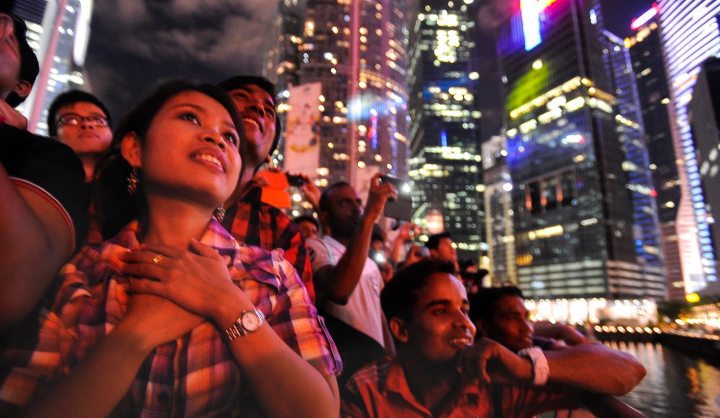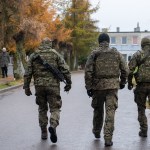World
From vision to mission to reality: What Singapore can teach Africa

Singapore’s efficiency has been achieved through some technology and bags of common sense, profiling customers and goods, and imposing strict penalties for transgressors. Somehow, it turned plans into policy. How is Africa going to do the same? By GREG MILLS.
The publication of national vision documents has become shorthand in Africa for development aspirations, one usually accompanied by bold infrastructure plans and projects. Kenya has its ‘Vision 2030’, for example, Rwanda its ‘Vision 2020’, Uganda ‘Vision 2040’, and in South Africa there is the much-debated National Development Plan.
While there is nothing wrong with such ambitions per se, the lesson from elsewhere is that more is required than endless work-shopping, the trolling out of pillars and priorities, bold statements and glossy pamphlets. Delivering on visions, providing infrastructure for example, requires at its operational core systems, software and skills, and dollops of political will. Africa has plenty of visions, but politics and policy usually remain short-sighted and in short supply in making the tough choices necessary for development progress.
Africans, among others, are regular visitors to Singapore in trying to identify lessons they can use at home. Many leave struck by the necessity of infrastructure as a tool of economic development. Everybody, it seems, wants a top-class port or two, industrial parks, an MRT railway, even their own Singapore Flyer or Grand Prix.
Yet these are outputs of the more important changes beneath the surface, from skills to security, and openness to ideas and trade, and about making and justifying difficult choices.
On the eve of Singapore’s 49th independence anniversary this August, its Minister of Social and Family Development, Chan Chun Sing, reviewed the island’s achievements and future challenges.
Speaking to the Economic Society of Singapore, he openly assessed the geo-political uncertainties created by US-China relations and the challenges posed by fast-growing and developing neighbours, notably Indonesia and Malaysia. Rather than lamenting Singapore’s constraints, in weighing in on the debate about the correct scale of transfers between the rich and poor, he said, “Our real and greater challenge is to strengthen the ability of our middle-income earners to compete on the global stage, rather than only arguing about the scale of transfers.” These transfers, he observed, had to be kept at a sustainable level, so as not to burden future generations.
His overall message: Singapore had to continue to turn constraints into opportunity.
The record is outstanding. At independence in 1965, Singapore’s per capita GDP was just $500, the nascent country described as a “Third World trading power, an entrepôt centre chocked by polluted rivers”, where the bulk of the population did not have access to electricity, running water or other basic services. There was not much to work with, save the old British dockyard and, more valuable, what was between the ears of its people.
Today average income is over $50,000, ranking Singapore in the top ten worldwide.
While the relevance of the Singapore story may seem remote for those countries stuck at per capita income levels around $1,000, which is much of Africa, it offers a lesson still in leadership, planning, continuous innovation, commercial logic, and making tough decisions.
Unlike countries which respond xenophobically to a shortage of jobs, a predictable political genuflection in times of austerity, Singapore has sought to attract foreigners: both multinational companies as a primary source of capital and technology, and people. From little over one million people at independence, of today’s population of 5.3 million, around 1.5 million are expatriates, permanent residents or migrant workers, the latter mainly from South Asia and the Philippines.
Unlike those nations which believe that the route to industrial development is behind protectionist barriers, Singapore is a gateway to the world of free trade.
There is a zero tariff on imported goods, while personal and corporate tax rates are capped at 20% and 18% respectively. Its trade equals over three times its GDP, facilitated by a network of more than a dozen free trade area agreements, along with its regional relationships in the Association of Southeast Asian Nations. Skills and better systems, as well as hardware, have placed Singapore at the forefront of a global service economy.
As one example, more than 32 million containers were offloaded at the Port of Singapore in 2013, the world’s second-busiest and, according to the World Bank, with the most efficient customs clearance processes. Trade documentation clearance time has been reduced officially from ten hours to under ten minutes, though in practice this is as quick as a mouse-click for 99.9% of imports. It’s so efficient, Mauritius bought the entire system, lock, stock and software.

Photo: A container crane places a container on the vessel Ludwigshafen Express at the Tanjong Pagar Terminal in Singapore, 16 July 2014. Reports state that financial institutions await Singapore’s external trade figures for the month of June 2014 which are due to be released on 17 July 2014. EPA/WALLACE WOON
As a result, in Singapore, more than 90% of containers are cleared by customs in under ten minutes compared to an official minimum for example of 72 hours in Mombasa — though speak to any Kenyan importer, and you would be lucky if this were indeed the case.
Singapore’s efficiency has been achieved through some technology and bags of common sense, profiling customers and goods, and imposing strict penalties for transgressors.
Security, both personal and national, is also part of the inner stuffing of success.
In much of Africa, security is seen as an excuse for costly, unnecessary and excessive militarisation. In Singapore, born out of the failure of the Malayan Federation during the time of the Vietnam conflict and riven then with political and labour unrest, it is a cornerstone of the country’s development.
This is also true for the Asia-Pacific region per se. Home to half the world’s population, the three largest economies, and nine of the ten largest ports, it accounts for over nine trillion dollars in two-way trade. It is also the world’s “most militarised area”, in the words of the US military, with six of the ten largest armies.
Singapore’s 2014 National Day celebrations, a 2½-hour sound-and-light extravaganza held on Marina Bay, highlighted national tenets: unity and diversity, and the role of the armed forces as the spine of the nation.
Indirectly, the celebrations emphasised the centrality of leadership. The biggest cheer at the anniversary event was reserved for Lee Kuan Yew, the now frail 90-year-old father of modern Singapore. For those so inclined, his style of leadership illustrates the benefits of a benign dictator, of having someone in charge who can ‘get things done’.

Photo: Former Prime Minister Lee Kuan Yew speaks in Singapore 20 March 2013. The Standard Chartered Singapore Forum brings political and business leaders together to discuss issues effecting Singapores future, the financial crisis and Asian economies. EPA/STEPHEN MORRISON
This the wrong lesson usually taken by the wrong leaders for the wrong reasons – to find the means to subvert democracy and lessen the likelihood of losing power rather than inspiring high rates of growth over generations across a multi-ethnic society. Indeed, if there is one so-called ‘Asian value’ which stands out along with a commitment to popular welfare, it is Singapore itself, a melting-pot of Chinese (74%), Malay (13%) and Indian (10%) people.
And contrary to the notion of one person running things from the centre, the reality of Lee’s rule was quite different. His government, and those of his successors, involved top-quality peers, not just one ‘big man’. Singapore has been reliant on institutions in the pursuit of development, and this mindset was cultivated by Lee.
His government was characterised by two other, enduring traits – first, attention to detail in operationalising vision and driving projects to completion; second, an overarching focus on going forward, not dwelling on the horrors of colonialism, by thinking continuously about competitiveness and increased productivity.
Indeed, Minister Chan Chun Sing vigorously defended Singapore’s meritocracy. There is “nothing intrinsically wrong”, he said, with a system that rewards talent and effort, rather than kinship ties and inheritance. “We must continue to push hard,” he noted, “for continuous meritocracy. That one’s fate and achievement is not pre-ordained by one’s initial endowment, or any single achievement in life, but shaped more by one’s talent and continuous efforts.”
Execution against vision, turning plans into policies and actions, is the secret to Singapore’s success, and will be, too, in Africa. DM
Dr Mills, the author of ’Why States Recover’, is a visiting fellow at the Rajaratnam School of International Studies in Singapore.
Main photo: Faces of the public lit up by the fireworks display over the Marina Bay in Singapore, 09 August 2014. Singapore celebrated its 49th National Day with a parade and fireworks display at the Marina Bay. EPA/WALLACE WOON




















 Become an Insider
Become an Insider